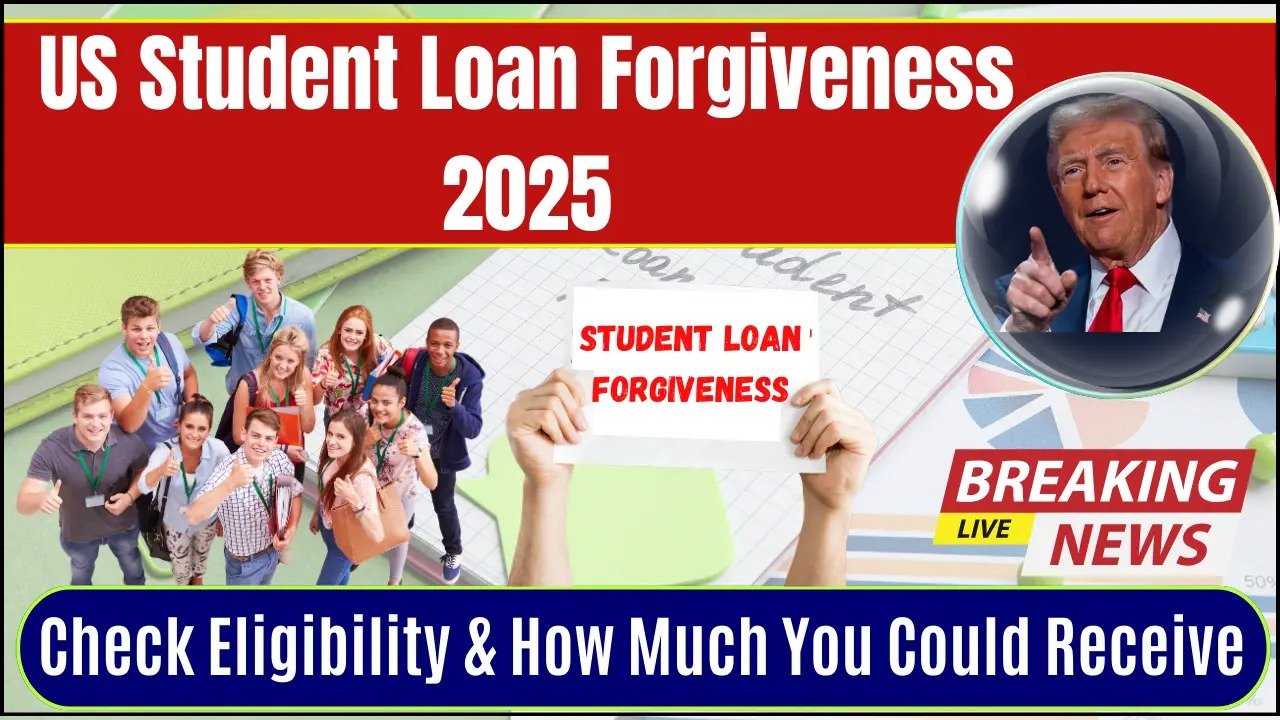Student loan debt is one of the biggest financial burdens for millions of Americans. In fact, over 44 million Americans carry an estimated $1.7 trillion in student loan debt. The Federal Student Loan Forgiveness Program offers hope to borrowers who meet specific criteria, allowing them to potentially have their loans completely forgiven.
In 2025, with new rules and reforms in place, it’s more important than ever to know how to navigate the application process. If you’re struggling with student loan debt, this guide will walk you through the steps to qualify for student loan forgiveness and the latest updates to the program.
What is the Federal Student Loan Forgiveness Program?
The Federal Student Loan Forgiveness Program is designed to relieve the financial burden of student loans for borrowers who work in public service careers or meet certain requirements. The program offers a path to have a portion of your loan balance forgiven after a set period of time.
For most borrowers, this forgiveness comes after 120 qualifying monthly payments (usually over 10 years), but that number can vary depending on the specific forgiveness program you qualify for.
Types of Student Loan Forgiveness Programs in the U.S.
- Public Service Loan Forgiveness (PSLF)
- This program is for federal employees, those in non-profit organizations, and individuals in public service roles such as teachers, nurses, and first responders.
- After making 120 qualifying payments, your federal loans may be forgiven.
- Teacher Loan Forgiveness
- Teachers working in low-income schools may be eligible for loan forgiveness after five years of service.
- You could have up to $17,500 forgiven on your loan balance if you meet the specific qualifications.
- Income-Driven Repayment (IDR) Forgiveness
- Borrowers who choose an income-driven repayment plan may qualify for forgiveness after making 20 to 25 years of qualifying payments.
- This plan is ideal for borrowers with high student loan debt relative to income.
Eligibility Requirements: How to Qualify for Student Loan Forgiveness
The eligibility for student loan forgiveness can vary depending on the program, but here are the basic qualifications for the most common forgiveness options:
- Public Service Loan Forgiveness (PSLF)
- Employment: You must work full-time for a government or non-profit organization.
- Loan Type: You must have Direct Loans. If you have other types of loans (e.g., Federal Family Education Loans), you’ll need to consolidate them into a Direct Loan.
- Payments: You must make 120 qualifying monthly payments under a qualifying repayment plan.
- Teacher Loan Forgiveness
- Employment: You must be a full-time teacher in a low-income school.
- Loan Type: Federal Stafford loans are eligible for forgiveness, but PLUS loans are not.
- Service Period: You must work for 5 consecutive years at an eligible school.
- Income-Driven Repayment (IDR) Forgiveness
- Income: You must qualify for an income-driven repayment plan, where your monthly payments are based on your income.
- Payment Term: After 20-25 years of qualifying payments, the remaining loan balance may be forgiven.
Steps to Apply for Federal Student Loan Forgiveness in 2025
To maximize your chances of having your loans forgiven, follow these key steps:
- Step 1: Check Your Loan Type
- Ensure that your student loan is a Direct Loan. If it’s a FFEL or Perkins Loan, you may need to consolidate them into a Direct Loan through the Direct Consolidation Loan program.
- Step 2: Choose the Right Repayment Plan
- To qualify for programs like PSLF or IDR, ensure you are enrolled in a qualifying repayment plan. Some income-driven repayment plans include Revised Pay As You Earn (REPAYE), Pay As You Earn (PAYE), and Income-Based Repayment (IBR).
- Step 3: Make Qualifying Payments
- Ensure you’re making qualifying monthly payments on time. Keep records of your payments and work with your loan servicer to track your progress toward forgiveness.
- Step 4: Submit the Application for Forgiveness
- For programs like PSLF, you will need to submit a PSLF Employment Certification Form every year to verify your qualifying employment. After making 120 qualifying payments, you can apply for forgiveness.
- For Teacher Loan Forgiveness, you must submit an application after completing your 5 years of service.
- Step 5: Keep Track of Updates and Changes
- The Biden administration has recently made updates to the PSLF program, including relaxing some rules and allowing for more borrowers to qualify. Be sure to keep an eye on changes to the program that could further benefit you.
Common Pitfalls to Avoid
- Missing Payments or Wrong Plan: Ensure you are on a qualifying repayment plan and making your monthly payments on time.
- Incorrect Documentation: Keep thorough records of your employment and payments. Missteps in documentation can delay the forgiveness process.
- Not Reapplying for Employment Certification: Many borrowers forget to reapply for the PSLF Employment Certification each year, which could impact their progress.
Can I Really Qualify for Loan Forgiveness?
It’s absolutely possible to qualify for student loan forgiveness, but it requires patience and diligence. If you meet the eligibility criteria and follow the application steps, you can enjoy the relief of having your student loans forgiven—but make sure to keep track of all your documents and stay on top of any program changes.
Final Thoughts: Take Advantage of the Federal Student Loan Forgiveness Program in 2025
If you’re eligible for the Federal Student Loan Forgiveness Program, now is the time to take action. With the new rules and updated policies in 2025, there’s no better moment to make sure you qualify for student loan relief. Whether you’re in public service, a teacher, or simply looking for a more affordable repayment option, these programs offer a pathway to finally get rid of your student debt.
Make sure you’re following the right steps, keep all your documents in order, and check for the latest updates to the program to make sure you don’t miss out on the opportunity to have your loan balance forgiven!
Also Read:
